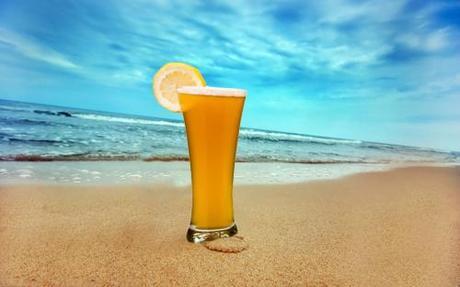
As American consumers, it’s our Constitutional right to change our mind. Or something like that.
Rather, perhaps it’s just that we can be fickle when it comes to choosing what we want, when we want it. Our adherence to one brand is rapidly becoming a thing of the past.
Given the rise of craft beer, it should come as no surprise this behavior is especially prevalent with beer lover’s palates. Which is why I couldn’t help but chuckle when I saw this headline recently: “New Developments in radlers, shandies and pre-mixed beer drinks.” American drinkers are turning toward low-ABV, citrusy drinks? Wasn’t it just six months ago we were exalting the American craving for high-ABV options?
Things are certainly changing … but it’s not just a new movement:
… the number of new shandy or radler product launches more than tripled between 2008 and 2012. Furthermore, through the first four and a half months of 2013, the global new product launch numbers for shandy or radler beverages were nearly equal to the full-year launch count for 2011.
Typically associated with the blokes across the pond in England and other UK countries, these lemonade-beer mixtures are apparently taking US consumers by storm … but why?
Simply put: we like flavorful beer. Not only that, high flavor, easy-drinking brews make craft beer accessible, whether it’s “crafty” coming from SABMiller’s Leinenkugel Summer Shandy or “craft” from Boulevard Brewing’s Unfiltered Wheat, which makes up just over 60 percent of all Boulevard’s sales while relying on its citrusy wheat flavor at 4.4 percent ABV to attract customers.
There’s also Founder’s All Day IPA, which after debuting this spring is already the brewery’s top-selling brand. As Nick points out at Drink. Blog. Repeat.: Westbrook’s Gose, a 4 percent sour/salty wheat ale whose style originates from Germany, is the top version of that style on BeerAdvocate and RateBeer while being brewed and consumed right here in the Carolinas.
But why “small” beer? Perhaps the reason is a bit romantic:
Many small beers are vivid with flavor. The virtue of small beers is that they have less molecular density; the flavors have room to unfurl and blossom in the mouth. Certain styles have taken full advantage of this: Bavarian weizens have remarkable complexity (and are just psychedelic, period); Irish stouts can be sharp and intense with roast and hop bitterness; Berliner Weisses are so sour that Berliners developed the practice of cutting them with sugar syrups.
There are ample options in the history of beer styles that show how you can mix low-ABV levels with something that tastes great and is popular, too. Maybe now that we’ve acknowledged our over-infatuation with Russian imperial stouts, imperial IPAs and barleywines, we can move on to something new. (Not that those styles will die off in popularity, however)
In a beer industry flooded with new competition every day - 2,538 breweries and counting! – finding the next niche is pivotal. That’s probably why Big Beer has swarmed the shandy landscape with Shock Top, Labatt and other versions.
But what I’m taking away from it is that even if this is a seasonal blip and low-ABV options fade like the waning warm days of summer, less has been more and that’s something brewers won’t forget.
What do you think? Have shandies and other beers like it crept into your fridge?
+Bryan Roth
“Don’t drink to get drunk. Drink to enjoy life.” — Jack Kerouac

